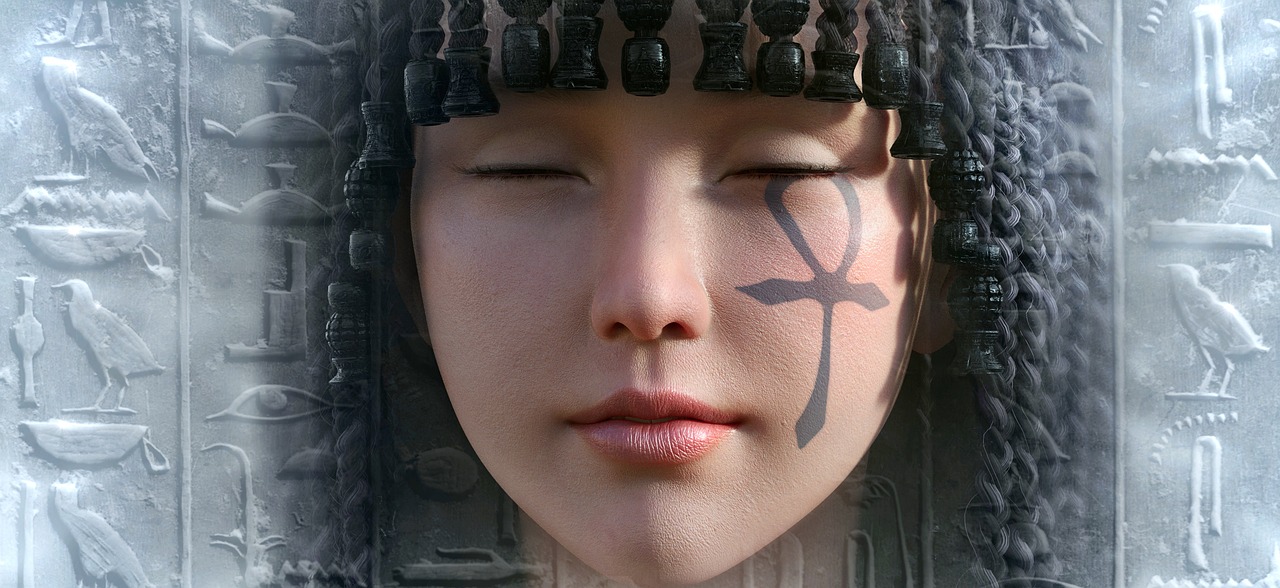Aker, also referred to as Akeru, ranks among the oldest Egyptian deities associated with the earth. Historical texts suggest that he was venerated even before other earth gods like Geb emerged. Aker embodied the concept of the horizon and served as the sentinel for the eastern and western edges of the afterlife, facilitating the passage of the king into the Amduat, or Underworld.
As a representation of the horizon, Aker was symbolic of the transition between day and night. Initially depicted as a slender strip of land bordered by lion heads looking away from each other, this imagery came to signify boundaries. Over time, these lion heads evolved into intricate full figures, one depicting “yesterday” and the other “tomorrow.” Aker was often referred to by the epithet “He who looks both forward and back.” Between these lion figures, the hieroglyph for the horizon would frequently be illustrated, showing the sun disc nestled between two mountains. In later portrayals, Aker appeared as two intertwined sphinx-like torsos sporting human heads.
As the transition point from night to day, Aker acted as the guardian of the entrance to the underworld, granting access for Re’s sun barque to travel in and out during sunrise and sunset. The deceased would seek Aker’s aid to access the underworld, relying on him to open the necessary gates. It was believed that Aker had the power to absorb and neutralize any poisonous aspects from the bodies of the dead, ensuring their well-being in the realm beyond. A critical aspect of Aker’s role involved restraining the celestial serpent Apophis after it was dismembered by the goddess Aset. Each night, Apophis would assault Re’s sun barque as it navigated the Underworld toward the dawn, prompting the gods and righteous souls to unify in combating the serpent. Aker would then ferry Re’s vessel along his back as it traveled from west to east throughout the night.
Ancient Egyptians perceived nature as infused with divine elements; hence, eclipses and cloudy days sparked concern as they were interpreted as Re struggling to elevate his sun barque back into the sky. Apophis was often deemed responsible for these struggles due to its regenerative capabilities. During the New Kingdom, a text titled The Book of Overthrowing Apophis emerged, drawing from earlier oral lore. According to Egyptologist Geraldine Pinch, this text invoked some of the most fearsome deities within the Egyptian pantheon to vanquish the chaos serpent, targeting various components including its body, name, shadow, and magical powers. This ongoing battle was re-enacted by priests, who would create effigies or illustrations of Apophis, which they subsequently cursed and destroyed through stabbing, trampling, or incineration.
Given the belief that Aker safeguarded the gates at dawn and dusk, twin lion statues were often erected at the entrances of both Egyptian tombs and palaces to ward off evil spirits and malevolent entities. This custom persisted and was embraced by the Greeks and Romans. Even in modern times, twin lions can be found at entrances to grand homes and buildings, each carrying diverse meanings based on their location. For instance, the renowned marble lions in front of the New York Public Library are named Patience and Fortitude. In Buddhist cultures, lion statues symbolize peace and prosperity; conversely, in Europe, they represent power and prestige. While Aker lacked dedicated temples, due to his intricate links with ancient elemental forces, his guardian lions continue to be a globally recognized motif.



